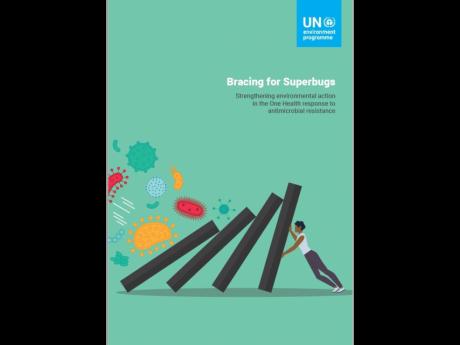Earth Today | Superbugs alert
Solving pollution crisis a public health imperative, according to report
IN THE effort to reduce superbugs and safeguard public health, comprehensively addressing pollution is being championed as a game changer.
This is reflected in a report from the United Nations Environment Programme (UNEP), which flags pollution as a driver of antimicrobial resistance (AMR), which is developed by some microorganisms – notably bacteria, fungi, parasites and viruses – to antibiotics, antifungals, antiparasitics and antivirals.
“Global attention to AMR has mainly focused on human health and agriculture sectors, but there is growing evidence that the environment plays a key role in the development, transmission and spread of AMR,” revealed the report, titled Bracing for Superbugs: Strengthening environmental action in the One Health response to antimicrobial resistance.
“The environmental dimensions of AMR are complex and characterised by dynamic interactions, cyclic interrelationships, complexities and multiple causalities and dynamics in multidimensional media that impact global planetary health. AMR can occur naturally or can be acquired. Increased use and misuse of antimicrobials and other microbial stressors, such as pollution, create favourable conditions for microorganisms to develop resistance, both in humans and the environment, from sources such as sewage,” it explained.
“Bacteria in water, soil and air, for example, can acquire resistance following contact with resistant microorganisms,” added the report – launched at the Sixth Meeting of the Global Leaders Group on AMR on February 7 in Barbados.
The environmental dimensions of AMR, according to the report, include pollution from hospital and community wastewater, effluent from pharmaceutical production, run-off originating from plant and animal agriculture, and other forms of waste and releases.
“These matrices may contain not only resistant microorganisms but also antimicrobials, various pharmaceuticals, microplastics, metals and other chemicals, which all increase the risk of AMR in the environment,” it said.
“Polluted waterways, particularly those that have been polluted for some time, are likely to harbour microorganisms that increase AMR development and distribution in the environment. With increasing pollution and lack of management of sources of pollution, combined with AMR in clinical and hospital settings and agriculture, risks are increasing,” the publication cautioned.
THE CHALLENGE
To meet the challenge, it said the ‘One Health’ approach is vital.
“Using the ‘One Health’ approach, which recognises that the health of people, animals, plants and the environment are closely linked and interdependent, can successfully address AMR. Some countries have already adopted this approach and have included environmental-related aspects into their National Action Plans on AMR,” it said.
“Agriculture, health and environmental agencies have in place many policy and regulatory frameworks and controls addressing some of the drivers and factors with an impact on environmental dimensions of AMR. Voluntary industry initiatives have established a common framework for managing discharge of antimicrobial compounds and apply it across manufacturing and supply chains, among their members,” the report added.
“International organisations and bodies are taking decisions and have initiatives such as the joint efforts of the Quadripartite Alliance (Food and Agricultural Organization, United Nations Environmental Programme, World Health Organization and World Organisation for Animal Health) for strong and coordinated action,” it said further.
But the response efforts must also go further “to address key pollution sources from poor sanitation; sewage; community and municipal wastes; healthcare delivery; pharmaceutical manufacturing; intensive crop, and terrestrial and aquatic animal production sectors”, it said.
Prevention, the report noted, is at the “core of the action, and environment is a key part of the action”.
“Implementing comprehensive and coordinated strengthening of environmental action in the One Health response to AMR will not only help reduce the risk and burden of AMR on societies, but will also help address the triple planetary crisis [of climate change, biodiversity loss and pollution],” it said.

